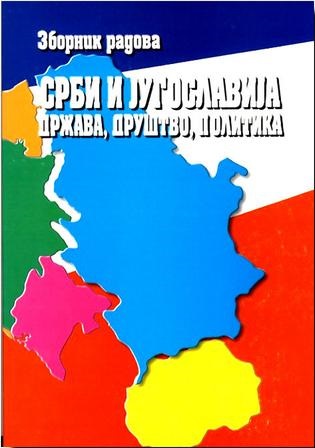Комунистичка стратегија према српској интелигенцији 1944–1950.
The Communist Strategy Toward the Serbian Intelligentsia 1944–1950
Author(s): Nataša Milićević
Subject(s): Political history, Social history, Government/Political systems, WW II and following years (1940 - 1949), History of Communism, Sociology of Politics
Published by: Institut za noviju istoriju Srbije
Keywords: Yugoslavia; Serbia; CPY; Serbian intelligentsia; communist strategy;
Summary/Abstract: The paper analyzes the Communist strategy toward the Serbian intelligentsia which determined its new role, importance and obligations in the first years after the Second World War. Under the pressure from numerous ideological, political, economic and cultural factors, the Communist Party of Yugoslavia designed a complex strategy toward the Serbian intelligentsia. It comprised several strategic streams which ran parallelly, but which also overlapped. At the same time, they were mutually contradictory. Four strategic streams can be detected, depending on the goal, the methods applied, part of the intelligentsia targeted and the role it was assigned by the Communist Party: annihilation, integration, creation of a new intelligentsia and the build-up of the Communist Party intelligentsia. The first two streams had to do mostly with the intelligentsia left over from the bourgeois society in the period under scrutiny, but not exclusively with it. In opposition to annihilation which meant riding rough-shod over the intelligentsia, the integration was marked by gradual acceptance and integration into the society. In the first case, decisive was the inherited mistrust and suspicion of the Communist party caused by the bourgeois origin (70%) of the intelligentsia, as well as by the wartime adherence of its members. The situation facing the Communist Party after the liberation (small number of intellectuals and lack of cultural capital, low educational level of the society, almost 45% analphabets) was decisive in the later case. This was the framework for changing the old attitudes of the Communist Party toward the intelligentsia. The third stream of action – creation of the new intelligentsia – was the most important part in the Communist strategy toward the intelligentsia in general. Through changes in the school and educational system (by enabling pupils from vocational secondary schools to enroll at universities, by introducing mass grants and by changing curricula at the universities) it was aimed at changing the social make-up of pupils and students, professors, scientists, and at forging a new identity of the Yugoslav and Serbian intelligentsia, eventually creating the new identity of the Yugoslav and Serbian society. The last stream in the Communist strategy toward the Yugoslav and Serbian intelligentsia concerned measures and acts undertaken within the Communist Party. It presupposed increasing the number of intellectuals in the Communist Party membership through suppressing aversion toward the intelligentsia within the Party, increasing the educational level of the Party faithful, particularly after the difficulties encountered during the fulfillment of the Five-Year Development Plan of the country. Depending on the ideological rigidity, political necessity and social and economic needs during the first several years, it happened that, for a while, some of these strategic elements overshadowed the others, as was the case with annihilation and particularly with integration right after the Liberation. In the later phase, the second two streams would be dominant in the strategy, although the first two would not be completely given up.
Book: Срби и Југославија. Држава, друштво, политика
- Page Range: 293-310
- Page Count: 18
- Publication Year: 2007
- Language: Serbian
- Content File-PDF

